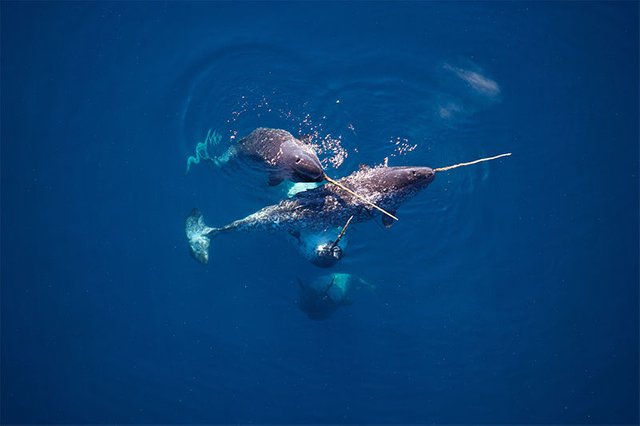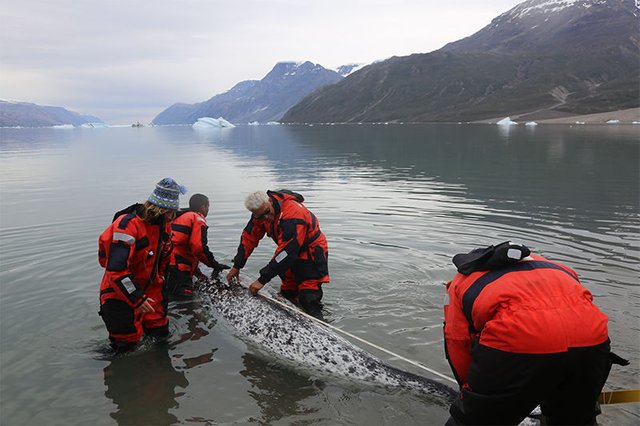
From Nature
When confronted with a human threat, most animals either freeze or flee — but the narwhal does a mixture of both, say the authors of a study in Science1. This paradoxical response could make the toothed whales particularly vulnerable to the expansion of human activity in their Arctic habitat.Read more: https://www.nature.com/articles/d41586-017-08244-yAn estimated 100,000–150,000 narwhals (Monodon monoceros) live in the waters around Greenland, Canada and Russia. Until recently they have lived in relative isolation from humans: Inuit people kill them as part of a restricted subsistence hunt, but killer whales and polar bears have historically been their biggest threats. Now, however, declining levels of Arctic pack ice mean that seismic studies for oil exploration, shipping traffic and commercial fishing are all impinging on their habitat.
To investigate the possible impacts on narwhals, Terrie Williams, who studies the relationships between mammals’ environments and their physiology at the University of California, Santa Cruz, and her colleagues looked at heart-rate and dive data from recorders that they attached — temporarily, using suction cups — to five narwhals in eastern Greenland. All the animals had just been either released from nets or rescued from stranding during the annual indigenous hunt.
In a typical ‘freeze’ response, an animal’s heart rate slows, whereas in a ‘flee’ response, it speeds up. The narwhals apparently combined the two responses. After being freed, they made rapid deep dives — fleeing quickly — but their heart rates dropped as low as 3–4 beats per minute.
Panic pulse
A drop in heart rate is normal for a mammal during a dive, and helps to conserve oxygen. But Williams notes that normally when narwhals dive — to escape a killer whale, for example — they do it slowly, which puts less stress on the heart. (Unlike larger killer whales, narwhals can easily swim under ice cover then dive slowly to great depth, or swim into shallow bays.) By contrast, the ‘freeze–flee’ response had a worrying impact on the animals’ cardiovascular systems. The researchers calculated that a typical ‘escape dive’ after rescue from nets or stranding used up 97% of a narwhal’s oxygen stores, compared with just 52% for later dives, which the recorders also captured.
Even if only for the memes, we must save the mighty Narwhal.
Leave your thoughts in the comments below.
Follow @contentjunkie to stay up to date on more great posts like this one.


wow....amazing
Downvoting a post can decrease pending rewards and make it less visible. Common reasons:
Submit